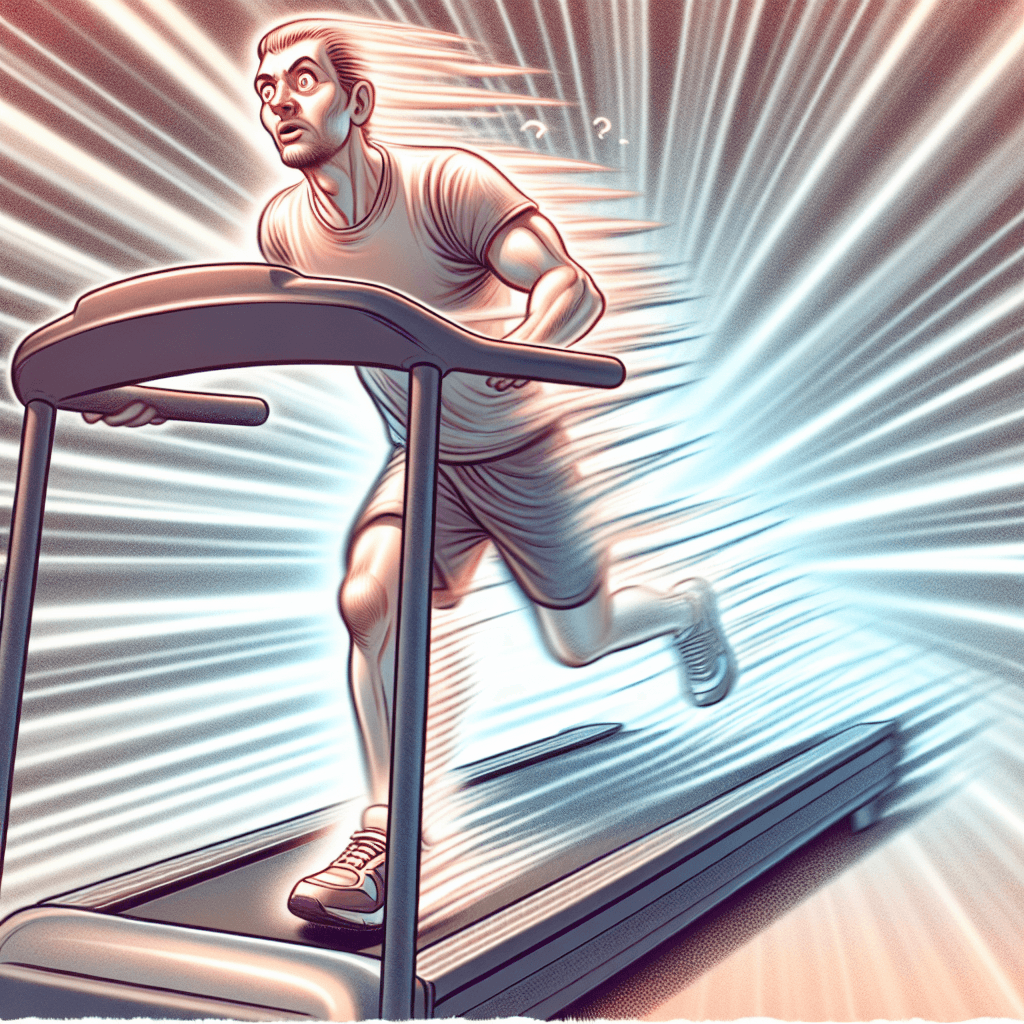Why do you feel like you're still moving after getting off a treadmill
Your feet have stopped, but your brain is still running a marathon. Discover the fascinating neural illusion that makes the world feel like it's moving long after your workout is over.


Too Long; Didn't Read
TLDR: Your brain adapts to running in place on the treadmill. When you get off, it takes a moment to readjust to solid ground, causing a brief illusion that you're still moving forward as it recalibrates.
The Phantom Treadmill: Why Do You Feel Like You're Still Moving After Getting Off a Treadmill?
You’ve just crushed a great workout on the treadmill, feeling accomplished and energized. You press the stop button, carefully step off the machine onto solid ground, and then… it happens. For a few strange seconds, you feel a bizarre sensation of being pulled backward, or as if the ground is still moving beneath you. It’s a disorienting experience that can leave you feeling wobbly and confused. If this has ever happened to you, you're not alone. This common phenomenon is not just in your head; it’s a fascinating trick your brain plays on you. This post will explore the science behind this "phantom movement" and explain exactly why your body needs a moment to catch up with reality after a treadmill session.
The Science Behind the Sensation: Motion Aftereffect Explained
The official term for this feeling is motion aftereffect, sometimes referred to as the "waterfall illusion." This is a powerful visual illusion experienced after you've been watching a moving object for some time and then look at a stationary object. The stationary object appears to move in the opposite direction of the original stimulus.
The waterfall illusion is the classic example: if you stare at a waterfall for about a minute and then shift your gaze to the stationary rocks beside it, the rocks will appear to drift upward. The same principle applies to the treadmill. You’ve been staring at a belt moving toward you while your body runs in place. When you step off, the stable ground now seems to move away from you. It's a completely normal, temporary sensory glitch.
A Brain-Body Disconnect: How Your Senses Get Confused
To understand the motion aftereffect, we need to look at how your brain processes movement. Three key systems are at play, and on a treadmill, they send conflicting information.
- Your Visual System: Your eyes see the treadmill belt moving toward you, creating the visual cue of forward motion. However, they also see the room around you—the walls, the TV, other gym equipment—as stationary.
- Your Vestibular System: Located in your inner ear, this system is your body's internal gyroscope. It controls balance and spatial orientation. It correctly senses that despite your legs moving, your head and torso are not actually accelerating or moving through the room.
- Proprioception: This is your body’s sense of its own position. Your muscles and joints send signals to your brain that you are performing the motions of running or walking.
On a treadmill, your brain receives a bizarre set of signals: your eyes say, "We're moving forward!" while your vestibular system and proprioception say, "No, we're staying right here!" To resolve this conflict, your brain makes a clever adaptation. It essentially "tunes out" the signal of forward motion by suppressing the specific neurons in the brain that detect it.
Stepping Back on Solid Ground: The Re-Calibration Phase
The strange sensation begins the moment you step off the machine. Suddenly, the visual input of the moving belt is gone. However, the neurons your brain suppressed don't instantly bounce back to their normal state. There's a slight lag in this re-calibration process.
For a brief period, the neurons that detect motion in the opposite direction (backward) are now more active by comparison. This imbalance creates the illusion that you are moving backward or that the stationary floor is moving forward. Your brain is essentially overcompensating for the motion that is no longer there. This phantom feeling is simply the aftereffect of your brain recalibrating its sensory inputs back to the reality of stable ground.
Is This Feeling Normal? Tips to Get Your Land Legs Back
Feeling wobbly after a treadmill workout is extremely common and not a cause for concern. It’s a sign that your brain’s adaptive mechanisms are working perfectly. For most people, the sensation lasts only a few seconds to a minute. If you find the feeling particularly strong or disorienting, here are a few simple tips to help you adjust more quickly:
- Implement a Cool-Down: Instead of hopping off immediately, spend the last 3-5 minutes of your workout gradually decreasing the speed. This gives your brain time to adapt slowly to less motion.
- Focus Your Gaze: After stepping off, fix your eyes on a stationary point in the distance. This helps your visual system re-anchor itself to a non-moving environment.
- Walk It Off: Take a moment to walk around on the gym floor. The act of actually moving forward helps your brain and body sync back up.
- Hold On: Don't hesitate to hold onto the treadmill's handrails or a nearby wall for a moment after you get off to ensure you have your balance.
The next time you step off the treadmill and feel that peculiar phantom movement, you'll know exactly what’s happening. It’s not a sign of a problem but rather a brief glimpse into the incredible, complex ways your brain adapts to its environment. This motion aftereffect is a temporary and harmless reminder of the constant, intricate dance between your body's senses and the brain that interprets them. So, embrace the wobble—it’s just proof of a healthy, adaptable mind.
More Articles

Why do movie punches sound so much crunchier and louder than real ones?
That sickening, bone-crunching punch you hear in the movies is a lie, and the secret ingredient is probably sitting in your refrigerator right now.

What makes a beer bottle suddenly foam over just from a light tap on top?
It’s not magic, it’s a shockwave; discover the explosive physics that turns a gentle tap on your beer bottle into an instant foamy geyser.

Why do police officers touch the back of a car during a traffic stop?
It’s not a random habit; that simple touch is a calculated, old-school tactic designed to leave a crucial and potentially life-saving piece of evidence behind.